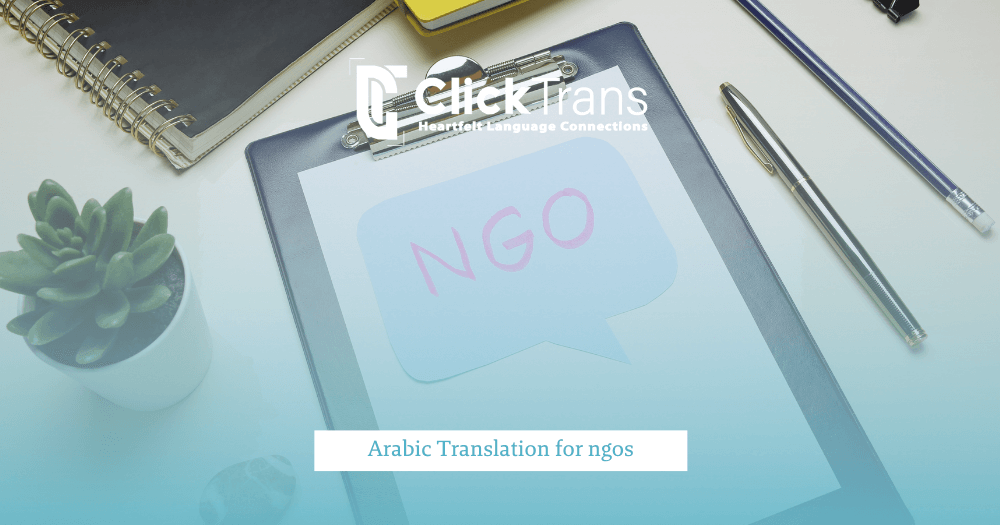Table of Contents
In today’s global landscape, localization is no longer optional—it’s essential for any business aiming to create meaningful, culturally relevant connections. Unlike simple translation, localization adapts your content to reflect cultural nuances like idioms, visuals, tone, and formatting.
Done right, it helps users feel like your product or message was made just for them.
In this guide, we’ll explore the 12 most common localization mistakes that could undermine your global success—and how to avoid them to build stronger engagement across markets.
Top 14 Localization Mistakes and How to Avoid Them
Making mistakes is not something to be ashamed of. There is always a learning curve for everything.To prevent this, you should we have decided to list the top 12 localization errors many people can fall in to help you make the most out of your localized content.
Translate with Context in Mind
When translating a text, you will find that context plays a huge role in delivering the most accurate equivalent of the source material in almost all cases.
Without context, it becomes extremely difficult to determine what the author of the original text truly means.
It is because on their own, words and phrases can carry so many different meanings that only a context will be the judge of the right choice to make.
If we take the word “bank” for example, we will find that without contextual information it can mean anything from a financial institution, the side of the river, or it can even be a verb.
A translator should always make sure they have access to the context behind the text they are working on so they can easily decipher the intended meaning.
Respect Cultural Differences to Avoid Misinterpretation
Minding cultural differences is one of the most integral things you should pay attention to while localizing content. Ignoring them is one of those localization issues that can tarnish your image internationally.
As already established, localization is not just about translating texts word for word. It also takes into consideration the cultural heritage of a nation.
In the 1960s and 1970s, when Pepsi ran its global slogan: “Come alive with the Pepsi Generation,” it was considered one of its most successful campaigns until it wasn’t.
This happened after the ads were ported to China and Pepsi’s sales dropped because of the misunderstanding that the beverage would actually bring people to life; or their ancestors to be more specific.
In China, they hold profound respect for the dead and so instead of having a favorable impact, the slogan led to a backlash.
Avoiding this localization issue requires the translator to be knowledgeable about the cultures they are dealing with.
Using Machine Translation without Human Review
It is true that machine translation and AI tools have made huge strides when it comes to translation and localization. However, they still have a long distance to walk before they can 100% give up their need for human reviews.
Companies that rely solely on MT without post-editing are running the risk of producing robotic iterations and even inaccurate translations that may lead to consequential results.
This is why the best practice here is to always implement a human review process and hire professional machine translation post-editing services like ClickTranss for critical content that can’t do without human insight.
Overlooking Date, Time, and Number Formats
Localizing software offers many challenges. One of such challenges has to do with date, time, and numbers, whose formats vary from one country to another. A date written as “06/08/2025” can mean June 8 in the U.S, but August 6 in most of Europe.
Similarly, decimal points and commas in numbers differ, and it is no different when it comes to currency symbols and placement.
Failing to localize such details appropriately may lead to confusion on the users’ part or even serious transactional errors.
Therefore, it is essential to ensure your software and website are free from similar localization fails by supporting locale-specific formatting that enhances UX and achieves customer satisfaction.
Hard-Coding Text Instead of Using Resource Files
When localizing mobile applications, or any software for that matter, hard-coding text into the code complicates localization and makes your content more prone to localization mistakes.
Updates become a pain, the possibility of code breakages is higher, and scaling across multiple languages is made nearly impossible.
Instead of hard-coding, you should make sure that all user-facing texts are externalized into resource files that are easy to update and maintain.
Externalization doesn’t only facilitate content changes without developer intervention but also allows more efficient translation workflows and dynamic switching between languages.
Neglecting RTL and Non-Latin Scripts
Again, acknowledging the differences between languages will make your job much easier. A case in point can be seen in how Latin-based scripts go from left to right as opposed to other languages, such as Arabic and Hebrew that go from right to left.
When localizing digital content, neglecting this fact can lead to countless issues, including misaligned UI elements, broken text rendering, and improperly mirrored layouts.
This is why it’s advisable to test your interface in these languages early and use frameworks that support multilingual designs.
Inconsistent Terminology across Languages
Causing confusion to your users is not in your best interest. This is why you should avoid inconsistencies in terminology by all means.
A simple solution to this localization mistake is to build a multilingual glossary or terminology database and make it accessible to all translators, whether in house or third party, to ensure consistency across all projects.
Not Adapting Visuals or Graphics
Visual elements like icons, images, symbols, and animations hold the same significance as text and require close attention to cultural details on par with that paid to word or phrase linguistic conversion.
For example, if you are creating marketing collateral to advertise a new branch of a Europe-based restaurant and your target audience is in the Middle East, you should steer away from including any alcohol or pork imagery in your campaign, since the majority may not take it lightly.
If you don’t, you show ignorance on your part of the traditions in the area, which may lead to your campaign’s ultimate failure.
Skipping Localization Testing (LQA)
A quality assurance phase is non-negotiable in any industry. It is that integral step that ensures everything is fine and good to go.
Skipping this phase in a localization project can result in major content localization problems that entail broken layouts, untranslated text, and contextual errors.
LQA helps catch any mistakes that translators may have missed during the localization process. This is why you should always rely on native-speaking testers to do meticulous check-ups before releasing any localized content.
Bonus: E-Learning Localization Pitfalls to Watch Out For
E-learning localization comes with unique challenges that go beyond text translation. Here are some common mistakes to avoid:
Flat Translation of Interactive Content: Literal translations of quizzes or scenarios can confuse learners. Adapt content to fit cultural learning styles.
Non-Compliant Modules: Failing to ensure SCORM/xAPI compliance leads to playback and tracking issues. Always test across platforms.
Poor Voiceover Quality: Robotic or mismatched voiceovers reduce engagement. Use native voice talents with proper pacing.
Lack of Accessibility: Ignoring subtitles, WCAG compliance, or screen reader support excludes many users. Localized learning should be inclusive.
Avoiding these issues ensures better learner engagement, higher retention, and a more agile global workforce.
Lack of SEO Localization
When doing business online, one essential part of it is Search Engine Optimization or simply SEO, which entails optimizing your content to be recognized as relevant to a user’s searching process.
However, search engines cannot show your content in search results in other countries, without you giving them the proper signal first. This is where SEO localization becomes paramount.
By collaborating with local SEO experts to conduct SEO research for each locale and identify high-performing keywords in your target market, you make it easier for your business to expand globally.
One-Size-Fits-All Approach for All Markets
Respecting differences is perhaps the most important take you can obtain from this blog. At this point, you already know that assuming the same localization approach across all regions is a grave mistake.
This means you should always tailor your strategy based on each market’s needs. By adjusting your product offerings, marketing messages, and UX designs to meet region-specific demands, you give yourself a higher chance of success worldwide.
Failing to Maintain and Update Localized Content
Localization is not a one-time process to go through and call it a day. It is a multilayered endeavor that demands constant care and updated knowledge to keep up with international trends.
Users in global markets easily lose interest and trust in your brand when they see outdated content on your platform.
To avoid this hurdle, you can rely on automated tools that integrate localization workflows with your CMS or hire a professional localization service to do the job on your behalf to significantly reduce delays and ensure staying up to date.
Failing to Plan for Future Scalability
Many localization efforts fall into the trap of being short-sighted—built only for the immediate launch, without considering future growth. But localization isn’t a one-off task; it’s an ongoing strategy that should scale as your business expands into new markets.
If your systems, content architecture, and workflows aren’t designed to support additional languages and locales from the beginning, you risk creating inefficiencies, duplicating work, and encountering technical headaches every time you enter a new market.
For example: hard-coded text, lack of resource file separation, or inconsistent UI layouts can turn future updates into a costly mess.
How to avoid this mistake:
- Use scalable tools like a Translation Management System (TMS) or a flexible Content Management System (CMS) to streamline language expansion.
- Externalize all translatable content into resource files to avoid modifying code every time you add a new locale.
- Establish a centralized glossary and style guide early on to ensure consistency as your content grows.
- Build a modular content structure and design layouts with flexibility for RTL support, text expansion, and visual adaptations.
Scalability isn’t just a technical convenience—it’s a competitive advantage that saves time, money, and future frustration.
The Business Impact of Fixing These Localization Mistakes
Fixing localization mistakes isn’t just about avoiding embarrassment—it has a real and measurable impact on your business.
When you take localization seriously, the benefits go far beyond translation accuracy. You unlock new markets faster, improve user experience, and gain long-term trust from local audiences.
Here’s what addressing these issues can lead to:
- Higher User Engagement: Content that feels native increases time on site, conversions, and overall satisfaction.
- Faster Global Rollouts: Scalable workflows and clean code enable quicker launches in new regions.
- Reduced Support Costs: Clear and localized instructions reduce user confusion and support requests.
- Improved Brand Reputation: Cultural sensitivity and legal compliance show professionalism and care.
- Stronger ROI: Localized experiences convert better—users are more likely to buy when they feel understood.
In short, localization done right is not a cost—it’s a smart business investment.
Looking for accurate, certified, and fast translations?
Contact us today and request a free quote.
Conclusion
Expanding globally requires more than just translation—it demands cultural insight, attention to detail, and a commitment to getting it right. Localization is one of the most effective ways to connect with international audiences and build lasting trust.
By avoiding common localization mistakes, you not only enhance the user experience but also position your brand for long-term global success.
Need expert help with your localization strategy?
ClickTranss offers high-quality localization services tailored to your market’s unique needs—so your message speaks the right language, every time.
Get your free quote today and start localizing with confidence.
Frequently Asked Questions
What makes context so important to avoid localization mistakes?
Context holds information such as tone, intent, and placement. Without this information, a translator will face difficulty when determining whether a word like “charge” means fee or indicates movement.
• What is the difference between translation and localization?
Think of translation as part of localization. When a translator’s task is to translate content, it usually means they are focusing on conversion of words and meanings. Localization does that while also paying attention to cultural elements.
How often should localized content be updated?
Localized content should be updated whenever the source content undergoes any changes. Using automated tools that sync with localization workflows should facilitate this process and keep your peace of mind.
Why can’t I rely on machine translation tools to handle localization?
It’s possible to use machine translation tools to handle localization. However, without human post-editing, you are running the risk of falling into localization pitfalls that may have negative effects on your brand’s image.








